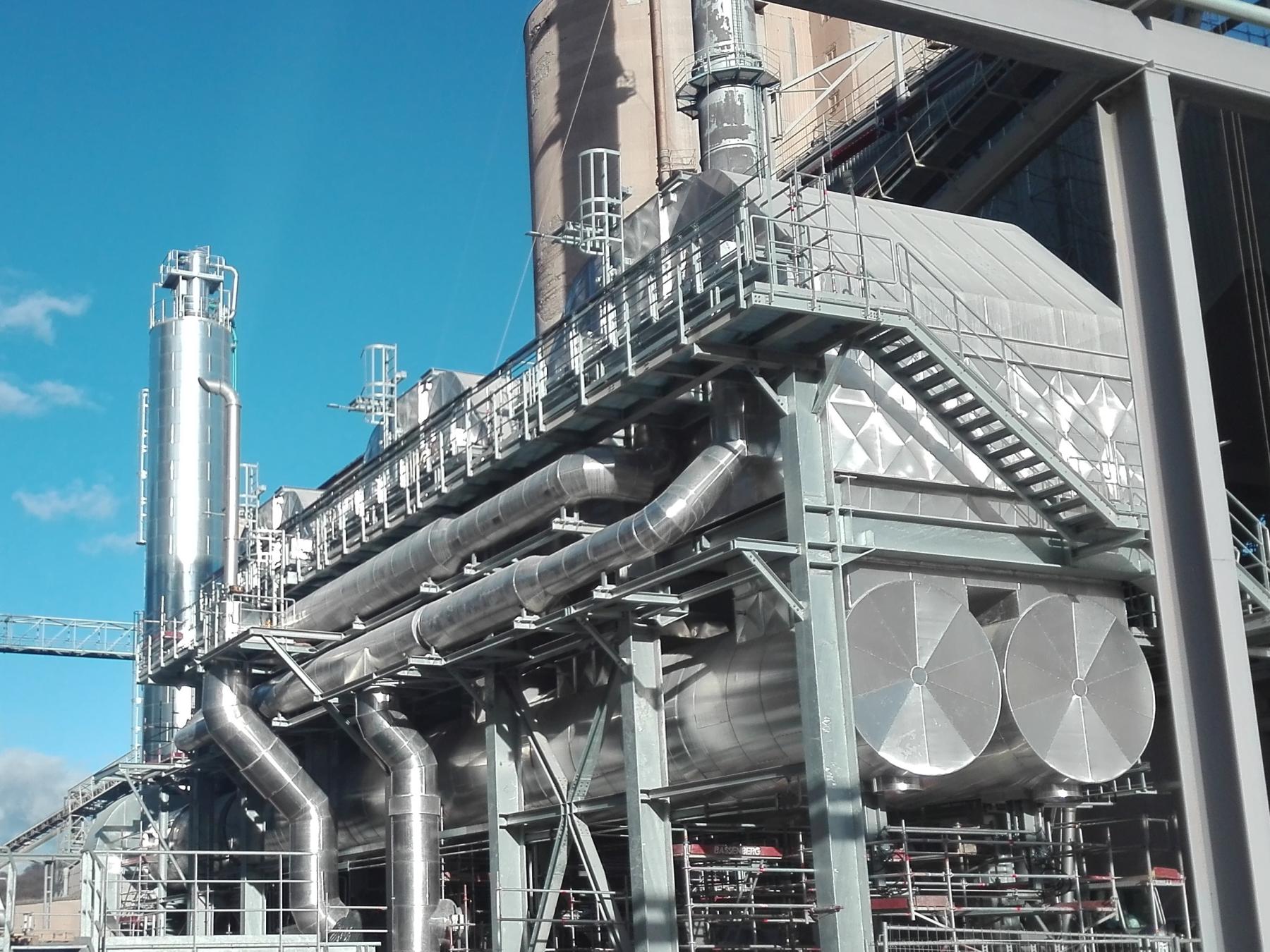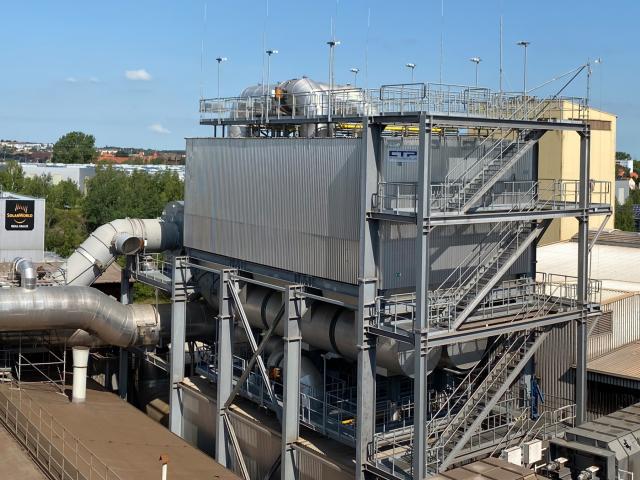
CTP installed the world's first newly developed AutoNOx system, a regenerative SCR plant with associated auxiliary units.
The revision of the 17. BimSchV in Germany, which reduced NOx limits to 200 mg/Nm³ (10% O2, dry), triggered a flood of upgrades to lower emissions.
Opterra Zement GmbH, a subsidiary of CRH, decided to install RSCR systems from CTP on each of the two kilns in their plant in Karsdorf, Germany, after comparing all solutions available on the market.
Each system is designed for 270.000 Nm³/h and will be located downstream of the baghouse, that will be converted from ESP to bagfilter. Each RSCR weighs about 400 tons and is designed with 27.600 blocks. The two RSCR systems will be the first of their kind and combine the advantages of the regenerator with an SCR in a novel way.
The RSCR makes short work of NOx, cutting emissions by more than 85%, while maintaining the NH3 emissions below 30 mg/Nm³ (10% O2, dry). The existing SNCR system, currently used for NOx control, will be taken offline. The RSCR system consists of three pairs of towers, each filled with ceramic honeycombs. The catalyst is arranged between the two heat exchanger beds in each of the three pairs. Cold waste gas enters the heat exchanger from below and is heated on the way into the reaction chamber, which is above the heat exchangers. Above the ceramics, the reducing agent, e.g. ammonia water, is finely dispersed into the gas stream through a distribution grid, before the gas passes through the SCR catalyst. The cleaned gas then passes through another heat exchanger and leaves the system.
In order to cover energy losses of the system and evaporate the reducing agent, an external loop is required. Gases are drawn from the reaction chamber downstream of the catalyst. They are heated up in a separate burning chamber before the reducing agent is injected. The mix is then brought back to the reaction chamber upstream of the catalyst and introduced through the distribution grid.
Since the regenerator provides unparalleled thermal efficiency, the amount of fuel to be added is kept to a minimum. Therefore this RSCR does not rely on the availability of additional heat in the plant and a costly heat transfer system to utilize it, which saves significant cost.
Some other News
Opterra opts for CTP AutoNox SCR

Please find enclosed our latest article published in the International Cement Review.
Successful project completion: our ambitions are solution-oriented
Adhering to strict safety precautions during Covid restrictions: our team has been working hard to ensure business continuity.
Meet CTP at the first online version of ACHEMA

CTP is looking forward to meeting you at the digital live event: the ACHEMA PULSE.
Introducing our new managing director, COO

CTP Chemisch Thermische Prozesstechnik GmbH, is very pleased to announce that Dr. Gerd Rabenstein has been appointed Managing Director, COO.
CTP’s new solution for a combined cleaning of organic pollutants and nitrogen oxides: RTO-i-SCR

CTP’s new solution for a combined cleaning of organic pollutants (RTO) and nitrogen oxides (SCR) “RTO-i-SCR” has been inaugurated at LANXESS in Antwerp.
Lanxess, the specialty chemicals company, has taken another major step on the road to climate neutrality. The new nitrous oxide reduction plant breaks down around 500 metric tons of nitrous oxide per year, which is equivalent to the climate impact of 150,000 metric tons of CO2.
CTP’s team during Covid-19

Despite the peculiar Covid-19 situation, CTP has supported customers worldwide, while ensuring compliance with local obligations to guarantee everyone’s health and safety.
Cemtech International Cement Conference

Cemtech "International Cement Conference" from 30 September – 2 October 2019
Social Responsibility
Sustainability to us means responsible corporate behavior, now and for future generations.
Successful cross-border project

Another cross-border project with CTP's Korean affiliate CTP Korea has
been successfully completed in the Czech Republic.
Trade Shows

IE EXPO SHANGHAI: CTP and CTP China have been exhibiting again at Asia's leading trade fair for environmental technology in Shanghai in April 2019.
Further conferences and tradeshows are upcoming soon.
Pagination
- Previous page
- Page 3